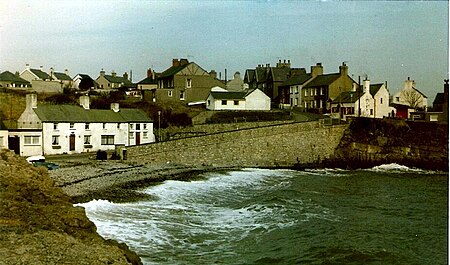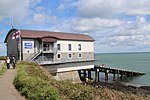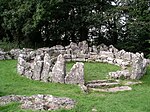Moelfre, Anglesey

Moelfre ([ˈmɔɨ̯lvrɛ] (listen)) is a village, a community and, until 2012, an electoral ward on the north-east coast of the Isle of Anglesey in Wales. The community area covers the village and harbour, and several smaller, dispersed settlements. It includes six scheduled Iron Age hut groups and many other sites of archaeological interest. The harbour was formerly a local fishing port; a lifeboat station has been based here since 1854. Among many shipwrecks off the coast was that of the Royal Charter in 1859. Near the modernised lifeboat station is the RNLI Seawatch Centre. The coastline includes a rocky headland north of the village and a large sandy beach at Lligwy Bay, both traversed by the Anglesey Coastal Path. The 2011 census measured the village population as 710. It was estimated at 614 in 2019.
Excerpt from the Wikipedia article Moelfre, Anglesey (License: CC BY-SA 3.0, Authors, Images).Moelfre, Anglesey
Geographical coordinates (GPS) Address Nearby Places Show on map
Geographical coordinates (GPS)
| Latitude | Longitude |
|---|---|
| N 53.35351 ° | E -4.2356 ° |
Address
LL72 8HW , Moelfre
Wales, United Kingdom
Open on Google Maps










